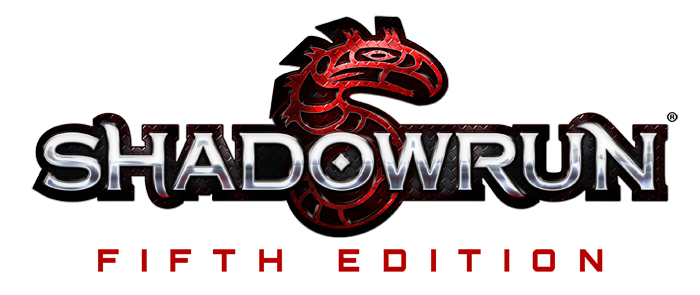Okay, let me be clear on one thing right off the bat: This is going to take more than one post to cover everything going on with the Matrix.
Designing a new edition of Shadowrun would be a lot easier if there was nothing cool about the Matrix. If it didn’t play an integral part in runs, or if it didn’t present some great scenes with vivid cyberpunk atmosphere. Because if that were the case, we could just take the sometimes problematic (speaking charitably) Matrix rules and excise them, put them in an expansion, and call it a day.
But the Matrix is more than just cool and useful—it’s an integral part of the Shadowrun setting. So we knew that one if the primary tasks of Shadowrun, Fifth Edition was making a more fun, user-friendly Matrix.
As was the case throughout the development of Shadowrun, Fifth Edition, we set out goals that would help guide us. Here’s the first group, with commentary on what we did about those goals.
1) As much as possible, Matrix rules should follow the patterns of other rules, meaning that tests are done with dice pools determined by skill + attribute. In rules, exceptions cause confusion, so as much as possible we avoided exceptions. This means Matrix actions follow the same pattern as other tests in Shadowrun.
2) Hackers should be able to do cool things at approximately the same pace as other players. Hacking can play an important role in combat, in infiltration scenarios, and in all sorts of situations—but not if the hacker is still fiddling around with dice rolls after the rest of the group has gotten where they are going, or after all the opponents are dead or fled. We worked to reduce the number of dice rolls hackers make, making it simpler for them to focus on what they want to do and then try to get it done—without making them overly powerful, of course. We also avoided having hacking actions require Extended Tests.
3) Wireless is not going away. The Matrix of Shadowrun, Fourth Edition made the leap to wireless technology, and that made substantial improvements to the Matrix. With the Matrix everywhere, hackers didn’t have to be tied to a particular location to get their work done. They could be mobile. The wireless Matrix also better reflected how current technology is evolving, and we saw no reason to take a step backward.
4) Hackers should be encouraged to be with the rest of the team as much as possible. The wireless Matrix helped solve the problem of having the hacker of a team sit in the basement while everyone else is out working, but it didn’t take away the issue entirely. It was still possible, even desirable, for the hacker to stay safe out of the line of fire while the rest of the team put themselves in the path of enemy bullets. Shadowrun, Fifth Edition is all about risk-reward. If hackers get are willing to get out there in the field and mix it up with the rest of their team, they should be rewarded. This comes through a mechanic called noise—the closer you get to your target, the less noise you have to deal with, and the stronger the signal will be, making it easier to hack through whatever you’re hacking through.
5) We like decks and cyberdecks. “Deckers” was one of the iconic terms of Shadowrun, and we missed it. So we decided to bring it back. The term “hackers” remains in the game–it’s an umbrella term covering those who hack the Matrix with the power of their minds (technomancers) and those who hack it with cyberdecks (deckers). These are not, however, the cyberdecks of early Shadowrun. They’re smaller, sleeker, they don’t have big, bulky keyboards, and they’re wireless-enabled.
So what do cyberdecks do, and why did they need to come back? Well, that has to do with the changing nature of the Matrix and the corporations’ desire to bend the network to better serve their ends. We’ll cover that next time!



18 Comments